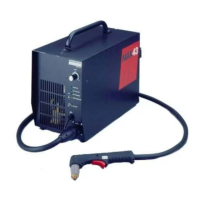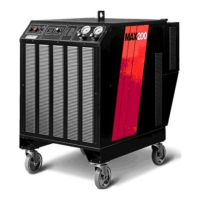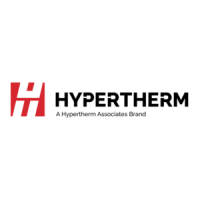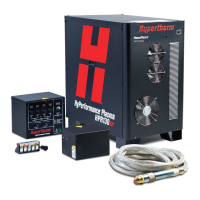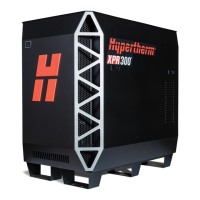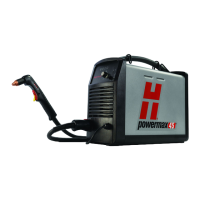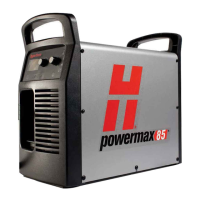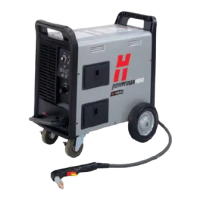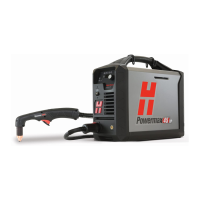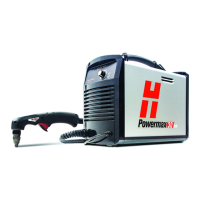98 MAXPRO200 Instruction Manual 807700 Revision 1
Operation
Dross
Low-speed dross forms when the torch’s cutting speed is too slow and the arc shoots ahead. It forms as a heavy, bubbly
deposit at the bottom of the cut and can be removed easily. Increase the speed to reduce the dross.
High-speed dross forms when the cutting speed is too fast and the arc lags behind. It forms as a thin, linear bead of solid
metal attached very closely to the cut. It is welded to the bottom of the cut and is difficult to remove. To reduce
high-speed dross:
• Decrease the cutting speed.
• Decrease arc voltage to decrease the torch-to-work distance.
Notes:
• Dross is more likely to form on warm or hot metal than on cool metal. The first cut in a series of cuts will
likely produce the least dross. As the workpiece heats up, more dross may form during subsequent cuts.
• Dross is more likely to form on mild steel than on stainless steel or aluminum.
• Worn or damaged consumables may produce intermittent dross.
Straightness of the cut surface
A typical plasma cut surface is slightly concave.
The cut surface may become more concave, or convex. Correct torch height is required to keep the cut
surface acceptably close to straight.
A strongly concave cut surface occurs when the torch-to-work distance is too low. Increase the arc
voltage to increase the torch-to-work distance and straighten the cut surface.
A convex cut surface occurs when the cut height is too great or the cutting current is too high. First,
reduce the arc voltage, then reduce the cutting current. If there is overlap between different cutting
currents for that thickness, try the consumables designed for the lower current.
How to increase cutting speed
To increase cutting speed, you can decrease the torch-to-work distance. However, decreasing this distance will increase
the negative cut angle.
For mechanized applications the torch must not touch the workpiece while piercing or cutting.
For hand held applications the shield can be touching the workpiece to provide stability during cutting.
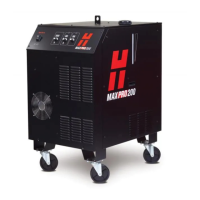
